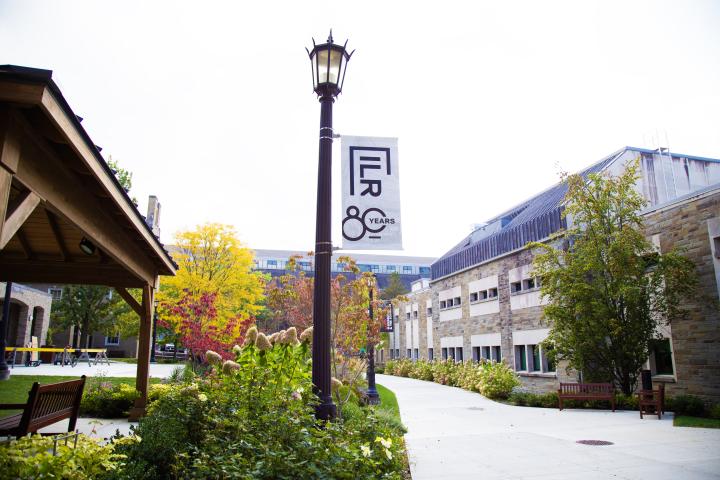
Future of Work
“The freelance workforce is the fastest-growing component of the economy,” said Louis Hyman, associate professor and director of ILR’s Institute for Workplace Studies.
“Figuring out where it is going is the most pressing question of our digital age,” he said at “The Present and Future of the Freelance Economy.” The panel discussion, part of the school’s Future of Work series, was held in the ILR New York City Conference Center in midtown Manhattan on Oct. 6.
Hyman stressed that “to make the right choices for ourselves, for our businesses and for our country requires good data and good conversation, and that’s what tonight is all about.”
Joining him on stage was Stephane Kasriel, CEO of Upwork, the world’s largest freelancing website for professionals and organizations, and Sara Horowitz '84, founder and executive director of the Freelancers Union, which has more than 300,000 members nationwide.
“Tonight, in the spirit of labor and management coming together, they will be presenting a new co-authored report on the state of the freelance economy, and discuss its implications for the present and future of work in the best ILR tradition,” Hyman said, referring to findings from the research study by Upwork and the Freelancers Union.
According to Hyman, “working together, Upwork and Freelancers Union are asking the questions that matter, and, through their unique position, finding the answers that we all want to know.”
Characterized as the most comprehensive measure of the U.S. independent workforce, the study analyzes the size of the freelance economy and provides insights into the lives of independent workers and their potential impact on both the economy and the country as a whole.
Trends the study reveals include:
- The freelance workforce is growing. It went from 53 million in 2014 to 55 million in 2016 and now represents 35 percent of the U.S. workforce. The freelance workforce earned an estimated $1 trillion this past year, representing a significant share of the U.S. economy.
- People are increasingly freelancing by choice as the job market changes. Asked whether they started freelancing more by choice or by necessity, 63 percent of freelancers said by choice — up 10 points since 2014. A diversified portfolio of clients is more secure than having one employer, the majority said.
- Technology is enabling freelancing. Technology makes it easier to find freelance work, said 75 percent — up four points since 2014. Additionally, 66 percent of freelancers said the amount of work they have obtained online has increased in the past year.
“Freelancers want to know that America supports them,” Kasriel said. “Independent professionals are an increasingly integral part of the U.S. workforce. We should be addressing their interests or America will fall behind countries that are better equipping their evolving workforces.”
Kasriel points out that this discussion is tricky though, as there is no shortcut to understanding who a ‘freelancer’ is, because the independent workforce is diverse given each individual’s freedom to create their own path.
“Though blanket statements are treacherous, this study is our effort to help open up more discussion and increase understanding,” Kasriel said.
According to Horowitz, “this year’s survey shows that freelancers are a diverse, but vital, part of the U.S. economy, contributing over $1 trillion in freelance earnings to the economy.”
With such a large contribution to the economy, freelancers find themselves in an interesting position – a new professional demographic that, because of their numbers, could impact the governance of the country, she said.
“As their ranks continue to swell, they have come to represent a largely untapped voter bloc that could have huge implications for our political system,” Horowitz said.
“Now’s the time for business leaders, policymakers and candidates alike to stand up and take notice of their potential influence and to start developing ways to help them overcome the most pressing issues impacting their lives.”
View the full panel discussion, Freelancing in America: The Present and Future of Gig Economy, on ILR's YouTube channel.


